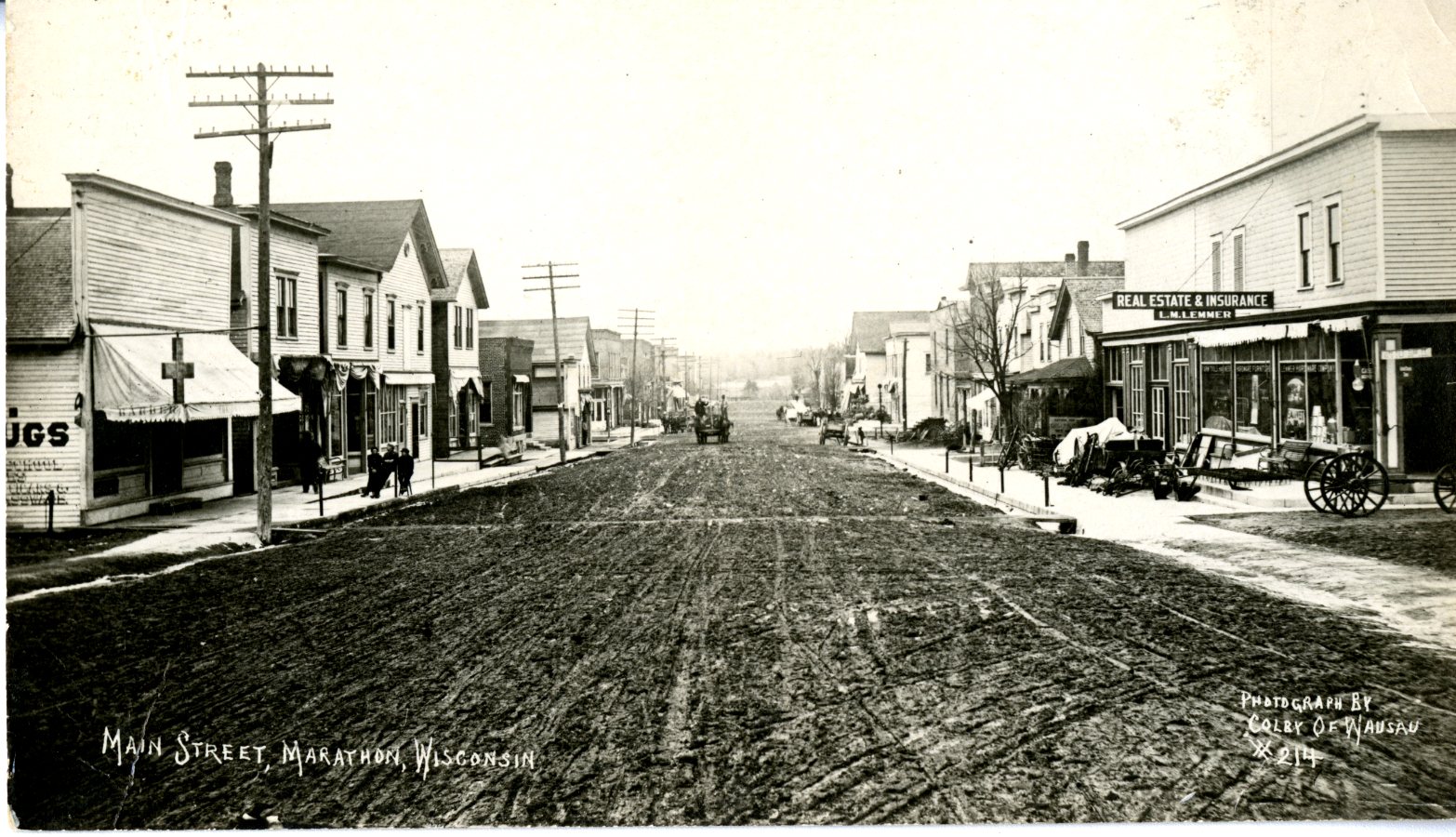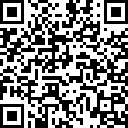Search our Places Database
Marathon, Village of
Return To List of Locations | Back to Search
For more information on this location, please contact our research library.

Author:
Mary Moltzan
Location:
T. 28 N. - R. 6 E., Sec. 6,17,18 and T. 28 N. - R. 5 E., Sec. 1 & 12, Townships of Marathon and Cassel
Formallized:
May 29, 1884
Background:
Population: 1905-582, 2000-1644
The history of the village and the town of Marathon are almost identical. For $100, each member of The Pittsburg Settlers' Club could get eighty acres of land near the newly laid out village, one village lot, and three acres on the outskirts of the village. But there was no business in the village, only dense forest, so settlers had to move on the land and farm. In the early stages, the platted village served only as a point for a meeting place.
See Township of Marathon
First Public Official:
John A. Lemmer
Biography:
Lemmer came to the area from Pittsburg in 1858, arriving a year after the first of the "Pittsburg German Homestead Society" settlers. He was elected as the first president and supervisor to represent Marathon City on the county board. He died from the accidental discharge of a gun.
Post Office Established:
September 8, 1864
First Postmaster:
Anton Koester
About The Post Office:
Originally named Marathon City, the name was changed to Marathon on February 16, 1883, with John Blume as postmaster. The P.O. is still in existance located in Section 6 of Marathon Township.
Â
The first post office was in a log building owned by the first postmaster. Whenever a new postmaster was appointed, the post office quarters usually moved into a building owned by the new postmaster.
Railroad:
The Milwaukee, Lake Shore and Western Railroad reached the Village of Marathon City in 1891. On July 4, 1892, Ringling Brothers' Circus was at Wausau. The new railroad advertised a round trip ticket from Marathon to Wausau, including the admission ticket, for ninety-five cents.
Churches:
1. St. Mary's Mission was first a log chapel, then a frame church building, erected in 1863. It was located on Main Street between 4th Street and 5th Street. It was replaced by a larger brick church, dedicated in 1877 and located on Main Street between Fifth Street and Sixth Street. A school was built in the basement.
The Church of the Nativity of the Blessed Virgin Mary was built on Market Street, Block 58, beginning in the spring of 1910 and completed in 1911. The Sisters' house and the school preceeded the building of the church.
2. German Evangelical Lutheran St. Matthew's Church was built in 1888.
3. Capuchin Franciscan Seminary was built in 1918 and closed in1970. It became St. Anthony's Retreat Center.
Schools:
1. In August 1858, the community hired Joseph Schuster as schoolmaster. His contract stipulated that German be taught several times a week plus religion every day, including Sunday, all for $15.00 per month.
2. Mention is made of a district school-house in 1867 located on the corner of Main and South streets.
3. St. Mary's School - 1875, located in the basement of the church and staffed by Franciscan Sisters from Manitowoc in 1882.
4. St. Joseph's School - built in 1905 in Block 58 on Market Street.
5. A new school, built of brick in1908, was erected on Block # 40, one block east of Main Street. It replaced the old grade school on top of the hill, the latter being auctioned off in 1909. The new building had four rooms, but only two were in use by 1912. In 1913, a tenth grade was added
Business:
1. Charles Klein opened a blacksmith shop in 1867 - 1868, and Frank Nolton started a wagon shop in 1868.
2. The first brick store building was erected in 1893 by Ritger, Mueller, and Seubert on the corner of Fifth and Main streets. The store was operated for many years by August Ritger, long time president of the village and owner and operator of the first creamery in Marathon County which he built just west of the store.
3. A hotel and hall was built by John Linder on Main Street during the year 1870 - 1871.
4. A saloon was built in the 1870's on the SW corner of Fifth and Main.
5. State Bank of Marathon City was organized by then Mayor August Ritger in 1905.
6. Marathon City Telephone Company was incorporated in 1906.
Examples of other businesses: boot and shoe store run by Robert Urbain; hardware and furniture store run by Fred Prehn and Son who were also undertakers; drug store run by Dr. Barber; blacksmith and wagonmaker business run by A. Busse and John Hanke
Industry:
1. Henry C. Fricke built a grist mill in 1870 and soon after a saw mill on the south bank of the Rib River.
2. Marathon City Brewing Co. was organized in 1881 by Stuhlfouth.
3. A sawmill was built by John A. Lemmer in 188.2
4. Menzner Saw and Planing Mill was built in 1894 on the east side of Main Street, south of the Rib River.
5. Creamery (See Business)
6. Cheese factory
Early industry centered around logging.
Farming:
See Background
Stories:
According to the history of Marathon written for its centenniaal in 1957, there was once a move to make the village the county seat.
" It came up before the county board and the result was a tie vote."
"After several attempts to break the tie, a recess was called. It is said that when the board reconvened, the result of another ballot gave Wausau the lead by one vote and the Marathon County board members somehow gained a dollar for the compromise."


